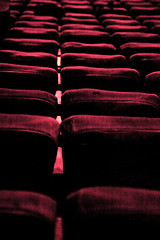On two successive, sunny weekends we visited two neighborhood parks of similar scale, with similar amenities, but strikingly different characters - to me responsive to the different characters of their surrounding neighborhoods.
Forest Hill Park in Southside Richmond was built along with the trolley car suburb, where I now live, in the early part of the last century. Henrico County's Deep Run Park is located in the "third ring," which is a car oriented suburb, built toward the end of the last century. Both have man made lakes with waterfowl (and apparently stocked with fish at Deep Run,) well kept and well used playgrounds, athletic facilities, picnic shelters, open, grassy areas for sunbathing, and wooded areas for strolling. Both have buildings which house community functions. At Forest Hill, its the old stone house which sits near the western edge of the open lawn area: a small facility, residential in scale (formerly a farm house,) which now houses events such as the neighborhood's art sales, and community group meetings. At Deep Run Park thiere is a significantly larger, contemporary Recreation Center, which we did not explore.
Good numbers of people were out enjoying the day at each park during our visits - relaxing, taking some exercise, catching some rays and people watching. Families with young children occupied every available piece of play equipment, and walked around the lakes at both parks - children getting a little too close to the Canada geese, and 'fishing' with fallen branches.
Both parks would have to be called successful to my eyes, and demonstrate a common desire for sunlight, fresh air, water and trees, but convivially rather than with the isolation of true wilderness. The primary difference was the place of the car in each.
We usually walk to Forest Hill- a good 20 minute walk one way to the playground ( with young children it can be much more.) We walk on neighborhood streets and can enter directly into the park from among the houses, or walk along busy Forest Hill Avenue which bounds the park to the south, but is still lined at that point with residences and sidewalks at that point. There is a parking area to the northwest corner of the park, and a road which parallels the adjacent street to access that lot, one pull in at the Stone House where some people park, and roads for maintenance vehicles that also serve pedestrians. Other than that, parking is on street parking.

Forest Hill Park in Southside Richmond was built along with the trolley car suburb, where I now live, in the early part of the last century. Henrico County's Deep Run Park is located in the "third ring," which is a car oriented suburb, built toward the end of the last century. Both have man made lakes with waterfowl (and apparently stocked with fish at Deep Run,) well kept and well used playgrounds, athletic facilities, picnic shelters, open, grassy areas for sunbathing, and wooded areas for strolling. Both have buildings which house community functions. At Forest Hill, its the old stone house which sits near the western edge of the open lawn area: a small facility, residential in scale (formerly a farm house,) which now houses events such as the neighborhood's art sales, and community group meetings. At Deep Run Park thiere is a significantly larger, contemporary Recreation Center, which we did not explore.
Good numbers of people were out enjoying the day at each park during our visits - relaxing, taking some exercise, catching some rays and people watching. Families with young children occupied every available piece of play equipment, and walked around the lakes at both parks - children getting a little too close to the Canada geese, and 'fishing' with fallen branches.
Both parks would have to be called successful to my eyes, and demonstrate a common desire for sunlight, fresh air, water and trees, but convivially rather than with the isolation of true wilderness. The primary difference was the place of the car in each.
We usually walk to Forest Hill- a good 20 minute walk one way to the playground ( with young children it can be much more.) We walk on neighborhood streets and can enter directly into the park from among the houses, or walk along busy Forest Hill Avenue which bounds the park to the south, but is still lined at that point with residences and sidewalks at that point. There is a parking area to the northwest corner of the park, and a road which parallels the adjacent street to access that lot, one pull in at the Stone House where some people park, and roads for maintenance vehicles that also serve pedestrians. Other than that, parking is on street parking.

At Deep Run, the parking areas were within the park, and adjacent to amenities, with a busy access road cutting through the center of the park - passing closely and visibly the northwest corner of the lakes. We drove to the park - apparently could have walked, but thinking about two guys with three small children and a dog crossing Gaskins road was none too appealing, so we didn't even ask. The act of driving made it seem like quite a venture - we stocked up on supplies for our voyage, packed the kids, stroller, bags, dog, etc. into the car and set off. We were far from alone because there was a wait for spaces in the parking lot (alright, a short wait; but a wait.) As I mentioned, both parks were pleasant and enjoyed by plenty of people, but the thought of all of us driving to get outdoors and walk struck me as funny.









